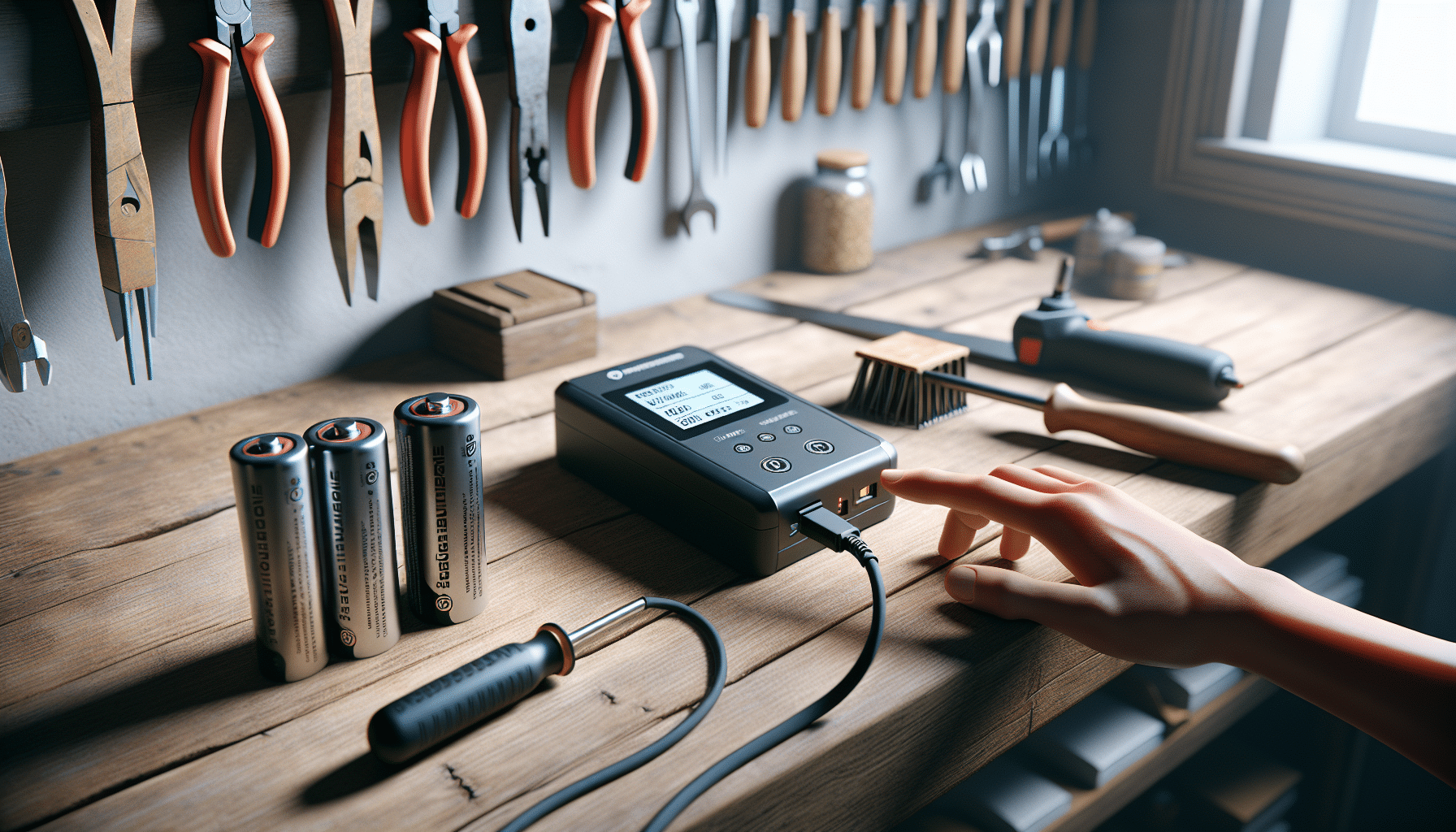Top Mistakes Killing Makita Batteries—How to Avoid Them
In This Article
- Use only Makita-approved smart chargers to avoid overcharging and ensure safety.
- Avoid fully depleting batteries—recharge at 20% capacity whenever possible.
- Store batteries in a dry, cool environment—never leave them in direct sunlight or freezing conditions.
- Follow the 80/20 rule to preserve lithium-ion chemistry and extend life expectancy.
- Check for early signs of failure and cease usage when irregularities occur.
- Label and rotate battery usage for balanced wear across all packs.
- Buy authentic cases, protectors, and accessories to prevent physical and environmental damage.
- Consult technical experts before attempting battery revival or repairs.
Battery Mistakes That Kill Makita Performance
Why Overcharging Is a Major Problem
One of the major pitfalls in Makita battery maintenance is overcharging. Many users believe simply leaving the battery on the charger overnight or indefinitely won’t cause any harm, but this is far from the truth. Continually supplying a battery with power after it reaches full charge can cause elevated internal temperatures. These higher temperatures degrade cell chemistry and significantly shorten the lifespan of your battery pack.
Makita’s rapid chargers are designed with built-in microprocessors to minimise the risk of overcharging, but even these smart systems can be misused. If users employ third-party chargers or bypass internal mechanisms, the likelihood of overcharging increases. The danger lies not just in capacity loss; it also increases the risk of thermal fatigue, which in rare cases, may cause the battery to swell or become unsafe.
Treat your batteries with care and adopt disciplined charging routines. Once the battery is full, remove it from the charger. It’s one of the most critical habits for good Makita battery maintenance.

Using the Wrong Charger
Understanding Makita Compatibility
Another major threat to battery health is using an incompatible or uncertified charger. Makita batteries are specifically engineered to work with Makita-brand chargers that support their Lithium-ion configuration. These chargers provide balanced, intelligent current delivery and precise voltage monitoring, preventing both undercharging and overcharging.
Using a generic or cheaper third-party charger might save money upfront, but it undermines battery longevity. These chargers often lack temperature control, cell-by-cell monitoring, or automatic shutoff mechanisms. Over time, irregular charging erodes battery efficiency, creating internal resistance and risking total failure.
For optimal Makita battery maintenance, always pair your batteries with manufacturer-approved chargers. This not only prolongs battery life but ensures your tools operate with consistent torque and performance levels.
“Using the wrong charger can ruin a Makita battery as fast as a faulty cell. Always match quality with compatibility.” — Electrical Tool Engineer, Birmingham
Deep Discharge Effects
The Truth About Battery Memory
A common myth in battery maintenance is the belief in an ever-present “memory effect,” where the battery ‘remembers’ the last charge level and gradually loses capacity. While this was true for old nickel-cadmium cells, modern Lithium-ion batteries, such as those used in Makita tools, do not suffer from this issue.
Instead, a much more pressing threat exists: deep discharge. Allowing a battery to drain completely and leaving it in that state for extended periods can push it below its recovery voltage. Once this occurs, most chargers will refuse to initiate charging due to safety protocols, rendering the battery unusable.
Practise responsible Makita battery maintenance by avoiding full discharge. Recharge when capacity hits around 20%. If a battery does become deeply discharged, avoid DIY revival methods unless you’re trained. Instead, consult a qualified technician or refer to Makita’s battery diagnostic guidelines.
Storing Batteries the Right Way
UK Climate Tips for Battery Longevity
Storage plays a surprisingly large role in Makita battery maintenance. The United Kingdom’s climate, with its frequent humidity and seasonal fluctuations, presents challenges for battery storage that must be managed properly. If batteries are kept in excessively warm or damp environments, you risk moisture seeping into the internal cell structure.
Ideally, you should store all Makita batteries in a cool, dry location—preferably between 10°C and 25°C. Direct sunlight, or storing in a van under glass, for example, can lead to the battery warming beyond safe storage limits. Equally, storing in unheated sheds during freezing months can reduce capacity and induce internal condensation.
Keep batteries at about 50% charge when storing long-term. This level reduces pressure on the cells while preserving chemical balance. Also, remove batteries from tools during extended downtimes. These small actions significantly improve battery lifespan.
Choosing a High-Quality Rapid Charger
Smart Charging Explained
Many DIY enthusiasts and professionals work in time-sensitive environments. As such, they turn to rapid chargers to minimise downtime. While rapid charging has immense efficiency benefits, it only enhances Makita battery maintenance if you use high-quality models equipped with smart features.
Smart chargers evaluate the battery’s internal temperature, voltage level, and charge history before supplying an optimised charging current. Makita’s DC18RC and DC40RA chargers, for instance, analyse each pack individually and adjust current flow to prevent overheating or uneven charging.
However, generic rapid chargers without these intelligent features may overload cells, especially during high ambient temperatures. Invest in a quality smart charger, and you’ll not only charge faster—you’ll also protect your battery’s longevity and safety.
Following the 80/20 Charging Rule
Maintaining Lithium-Ion Health
One of the best-kept secrets in Makita battery maintenance is the 80/20 rule—a charging guideline that encourages users to keep their batteries within 20% and 80% of full capacity instead of charging fully to 100% or depleting to 0%.
This practice stems from lithium chemistry behaviours. Continuous full charging or frequent deep discharging increases stress on the electrodes and wears the battery down faster. Stopping the charge at 80% and recharging at 20% reduces full cycle throughput, preserving long-term capacity.
Although Makita’s chargers are calibrated for full charging, experienced users have adopted timers or charge-monitoring apps to stop charging around 80%. For professionals who rely on multiple packs, rotating usage based on charge levels also helps balance battery usage and prolong pack life.
Signs Your Battery Is Failing
Early Warnings to Watch For
No matter how diligent your Makita battery maintenance routine is, batteries will eventually degrade. Recognising the early signs can prevent damage to your tools or unexpected work stoppages. Key indicators include noticeable runtime reduction, difficulty in holding charge, or unusually long charging cycles.
Other red flags include an unusually hot battery after light use, swollen casing, or sudden power fade during operation. These signs may suggest internal resistance buildup, degraded cells, or electronic control unit malfunction. Performing consistent tool and battery inspections can catch these issues early.
When spotting these symptoms, stop using the battery immediately. Continuing usage could lead to further damage or unsafe conditions. Refer to Learn more about Makita Battery Care & Maintenance to learn more about Makita battery diagnostics and replacement advice.
Battery Revival: What’s Possible?
Testing and Safety First
Concerns about the cost of replacing batteries have led some users to explore Do-It-Yourself revival tactics. While this is sometimes possible under tightly controlled circumstances, it is not universally recommended without proper equipment and training.
Makita batteries are complex systems with integrated circuit boards, temperature sensors, and balanced cells. Opening or attempting to jump-start a battery can void warranties and pose safety risks, including fire and electric shock. That said, if a battery appears dead but hasn’t suffered deep internal damage, some Makita-authorised dealers offer testing and reconditioning options.
Before deciding on a revival, use Makita’s battery status lights or a certified voltmeter to check the state. If the battery is within tolerance but shows erratic behaviour, it may be salvageable. Otherwise, dispose of it responsibly following WEEE regulations. More on environmentally sound disposal can be found at troubleshooting common Makita battery faults.
Community Insights & DIY Tips
What Tradespeople Are Saying
Skilled tradespeople across the UK offer a wealth of Makita battery maintenance wisdom. Forums and expert communities stress storage awareness, charger quality, and disciplined rotation between battery packs during prolonged jobs. Consistency, they say, is the key.
Some electricians suggest labelling batteries with purchase and first-charge dates to track their service history better. Others recommend using a thermal imager to detect overheating trends across older packs. On job sites, protective casing and on-tool usage tracking are also common best practices.
If you’re keen to join these communities or access downloadable maintenance checklists, visit Read a related article. You’ll find free resources and expert discussions tailored for both hobbyists and professionals.
Buying the Right Accessories
Chargers, Cases, and Battery Protectors
While batteries and chargers receive the most focus, critical accessories also play a role in Makita battery maintenance. Protective battery caps prevent dust accumulation when batteries are not in active use, especially on sites with high debris levels such as construction zones.
Durable carrying cases with secure latches and foam separation protect both tools and batteries from mechanical shock. Anti-static bags, meanwhile, are advised during longer-term storage. Investing in weatherproof toolbags also pays dividends when working in outdoor settings common to the UK climate.
Lastly, always purchase authentic accessories. Counterfeit protectors or clone chargers often lack key safety certifications. Verifying by sourcing directly through building trust and E-E-A-T for UK businesses is the best approach to ensure authenticity and quality.
Conclusion: How to Avoid Battery Failure
In conclusion, effective Makita battery maintenance bridges performance, safety, and cost-efficiency. Avoiding overcharging, using the correct charger, and storing batteries under favourable conditions go a long way toward preventing early degradation. Adopting practices such as the 80/20 rule and staying alert to warning signs ensures you maximise every pound spent on your equipment.
Furthermore, engaging with the Makita community and investing in approved accessories supports a long view of battery health. Whether you’re a tradesperson managing multiple tools or a weekend DIY enthusiast, these strategies will serve as a solid foundation. Keep your batteries safe, effective, and powerful—to ensure uninterrupted performance on every job site.
Great guide on top-mistakes-destroy-makita-batteries-how-to-avoid-interactive – Community Feedback
What common mistakes shorten Makita battery life?
Overcharging, exposure to high temperatures, using incompatible chargers, and deep discharging are major errors that reduce Makita battery lifespan. Always use recommended chargers, store batteries in a cool, dry place, and avoid full discharges where possible.
How do I know if my Makita battery is damaged?
Warning signs include reduced runtime, failure to hold charge, overheating, and visible damage. If you notice any of these, cease use and check with a professional or replace the battery for safety.
Can I improve the performance of my Makita battery?
Yes, use the 80/20 charging rule, avoid full discharges, charge at room temperature, and choose high-quality or rapid chargers compatible with Makita batteries to extend battery health and improve performance.



